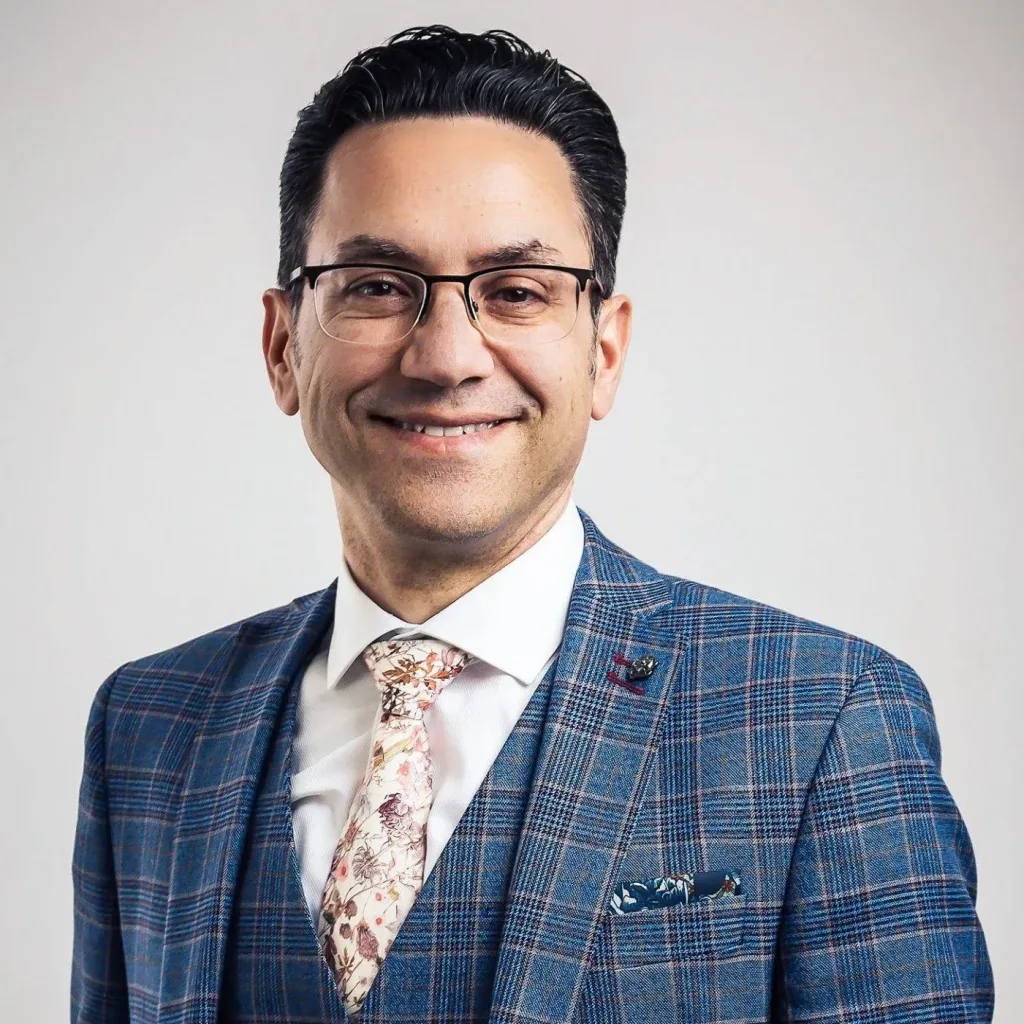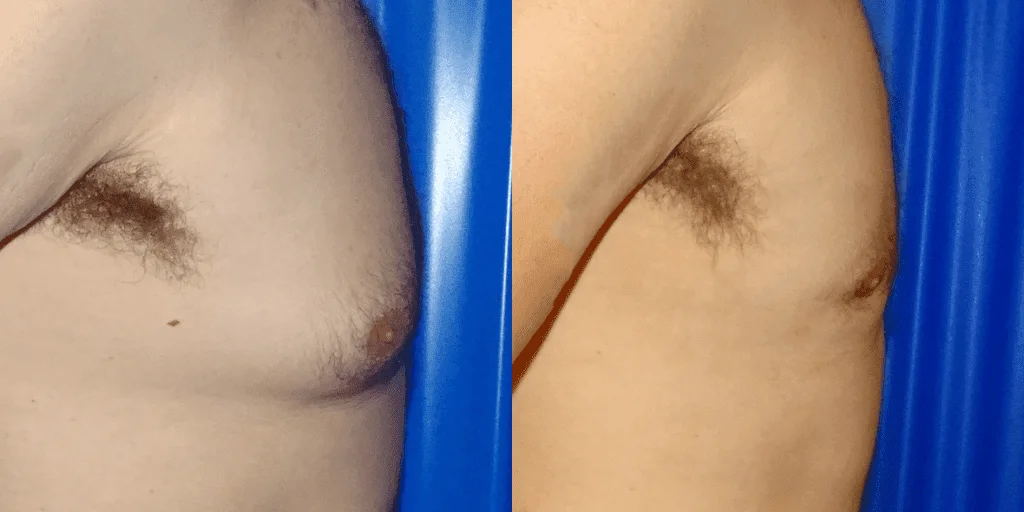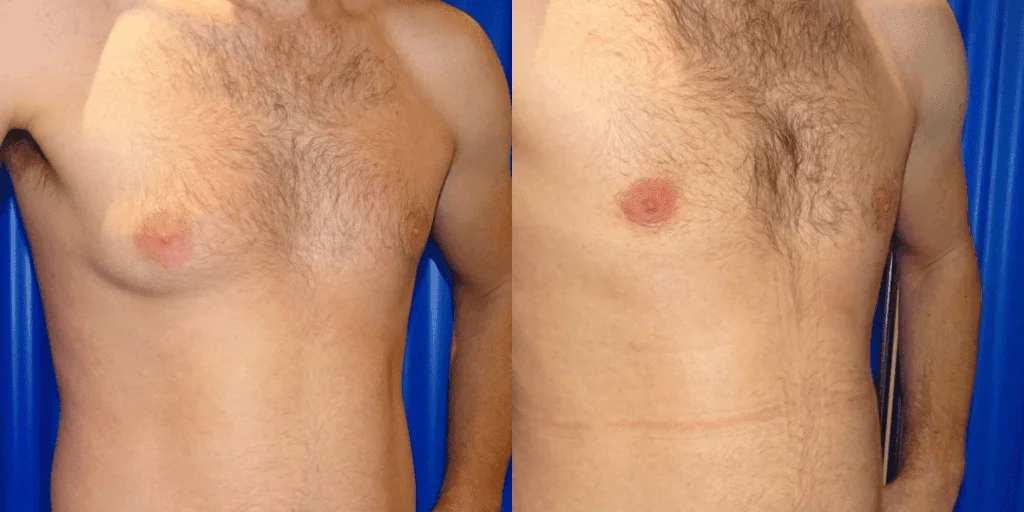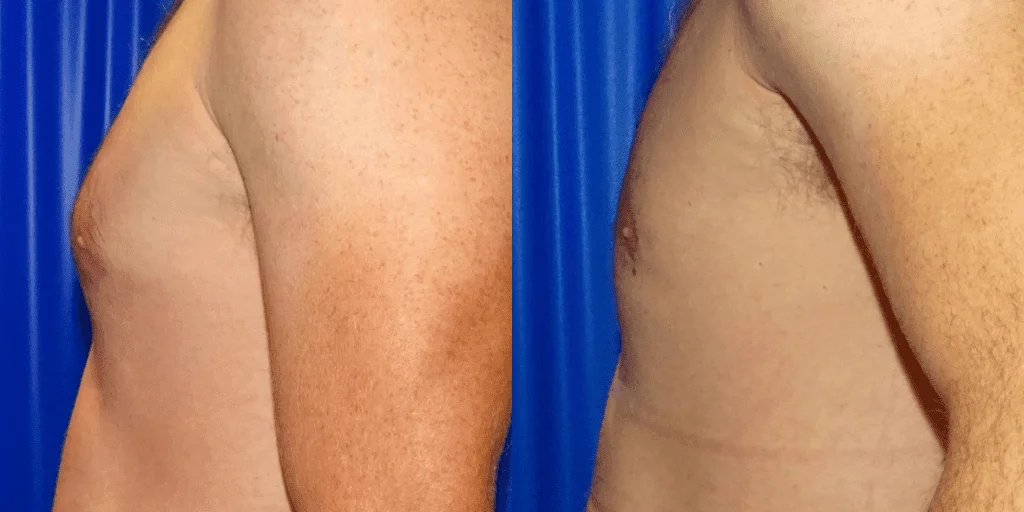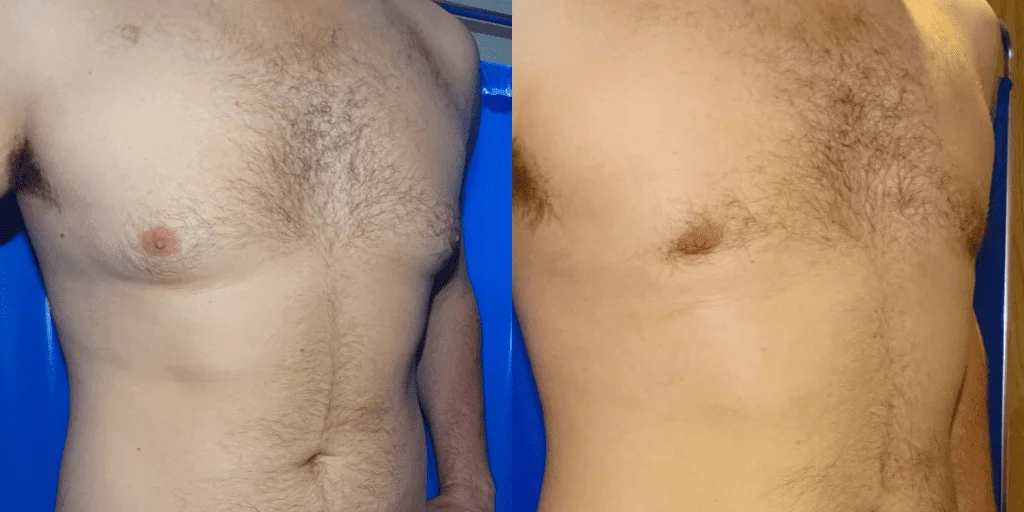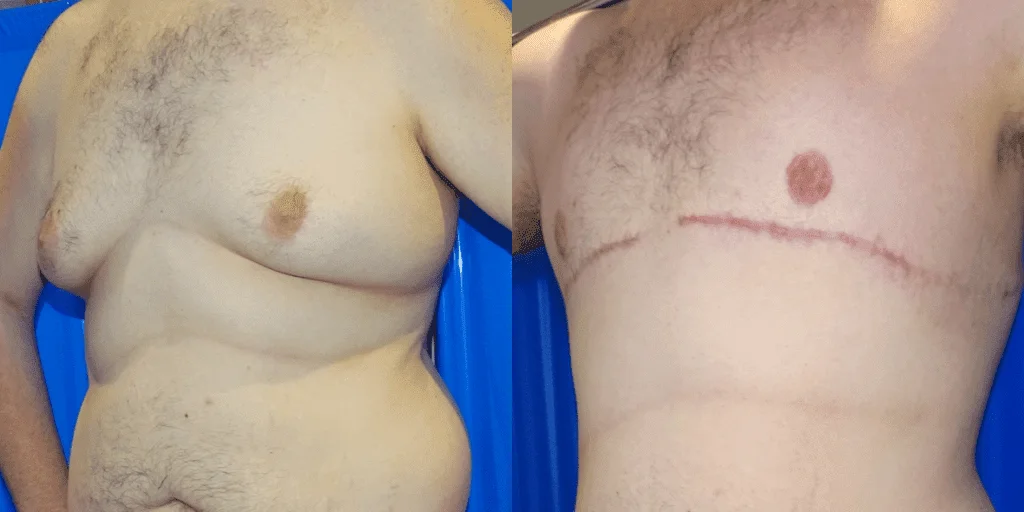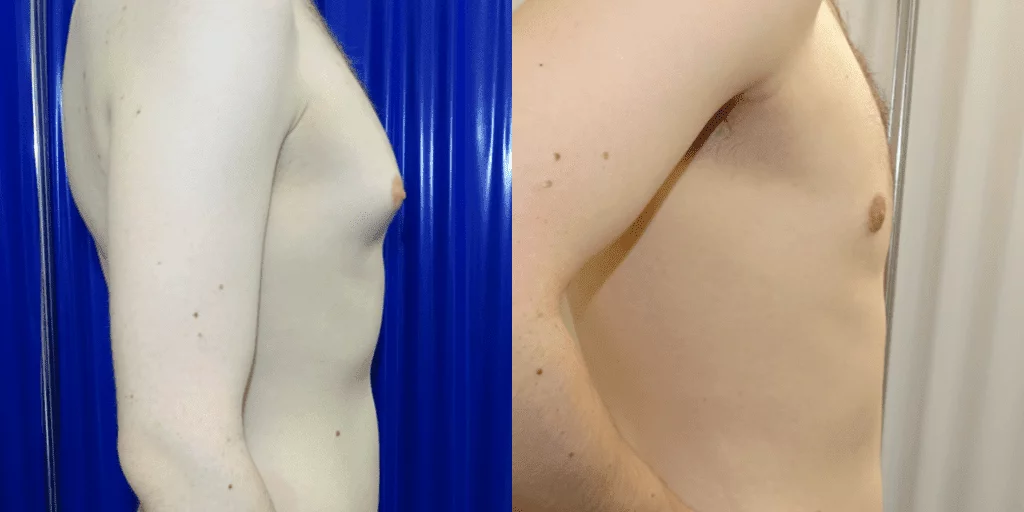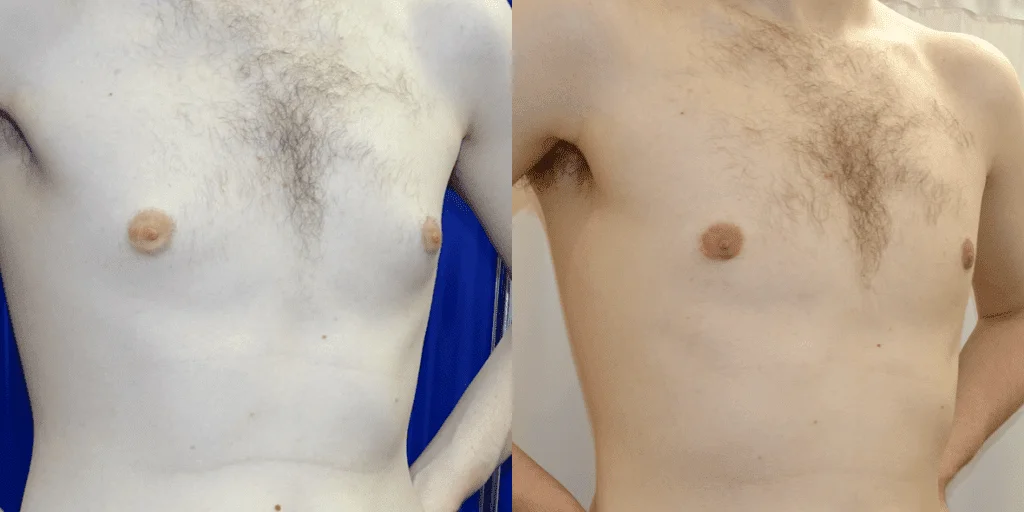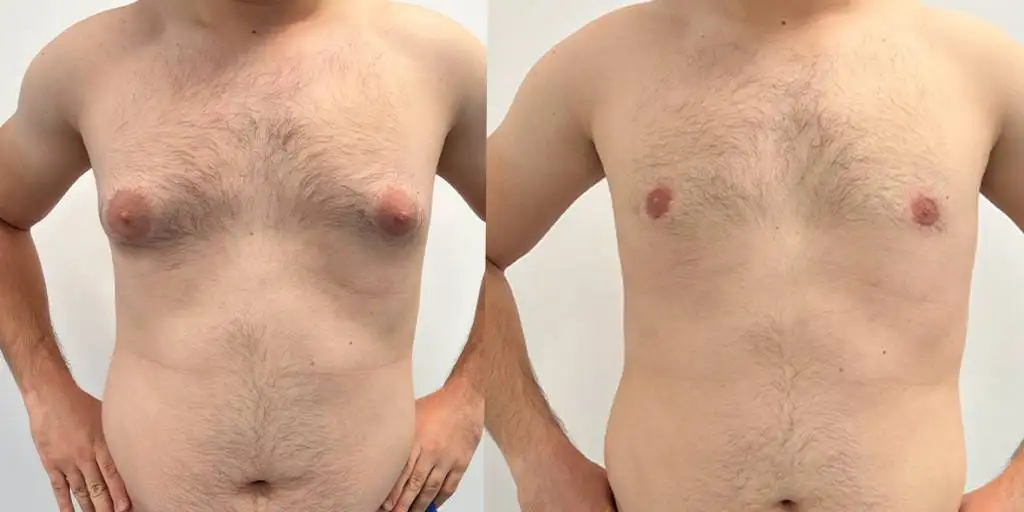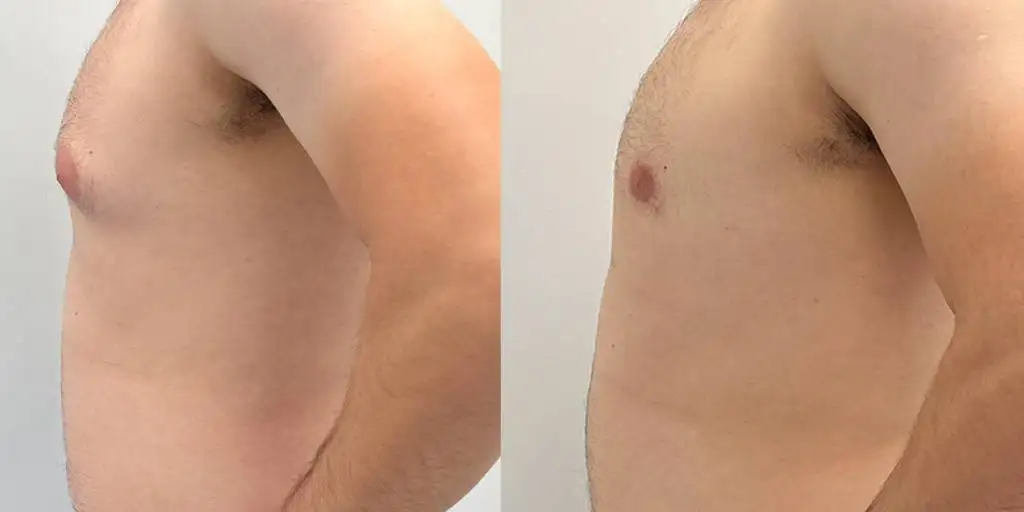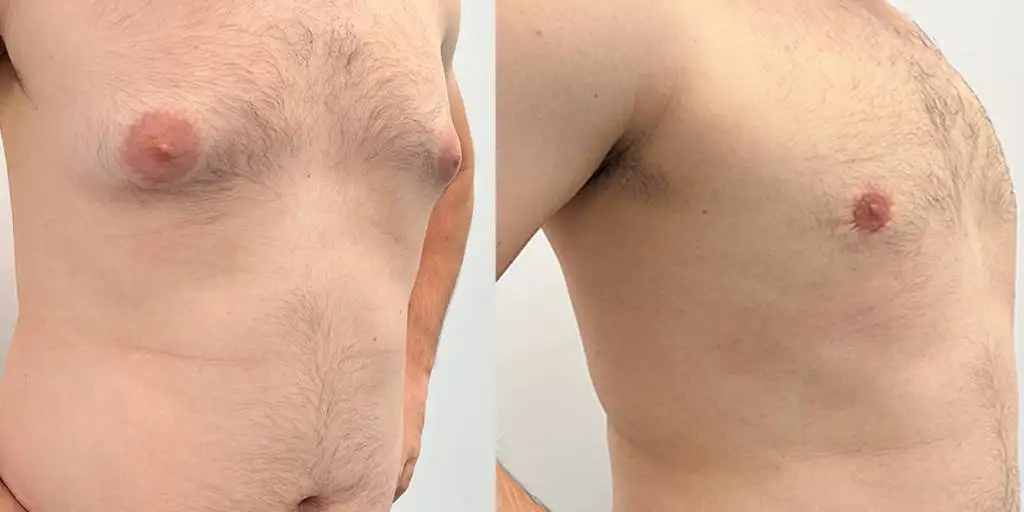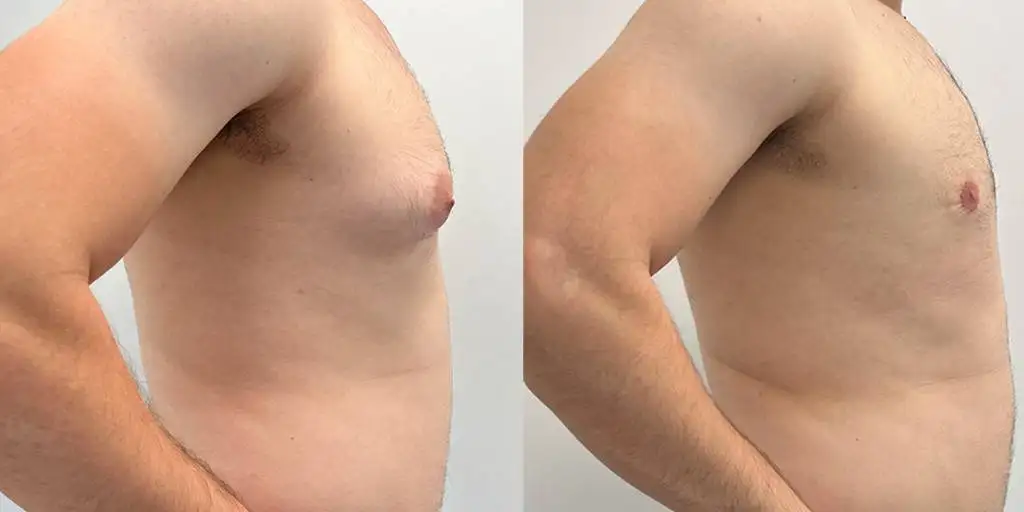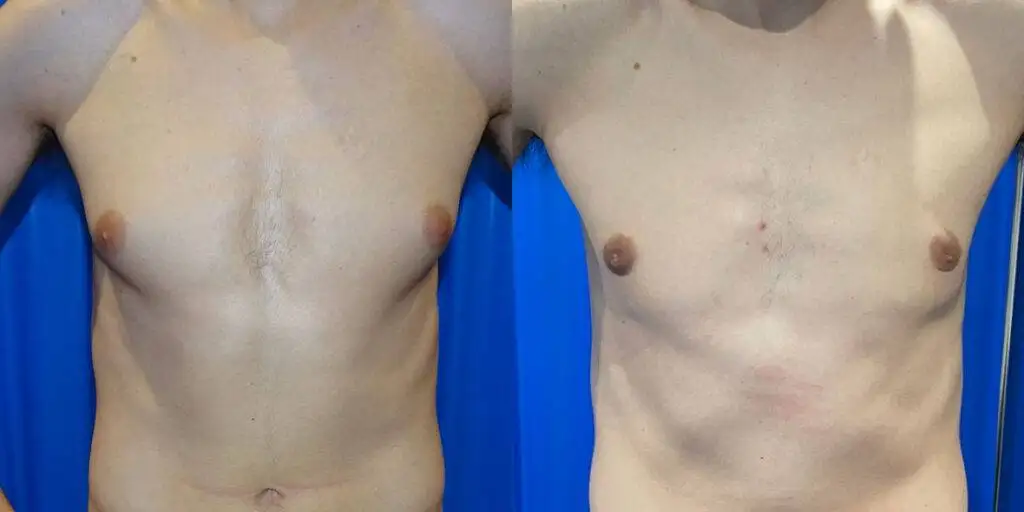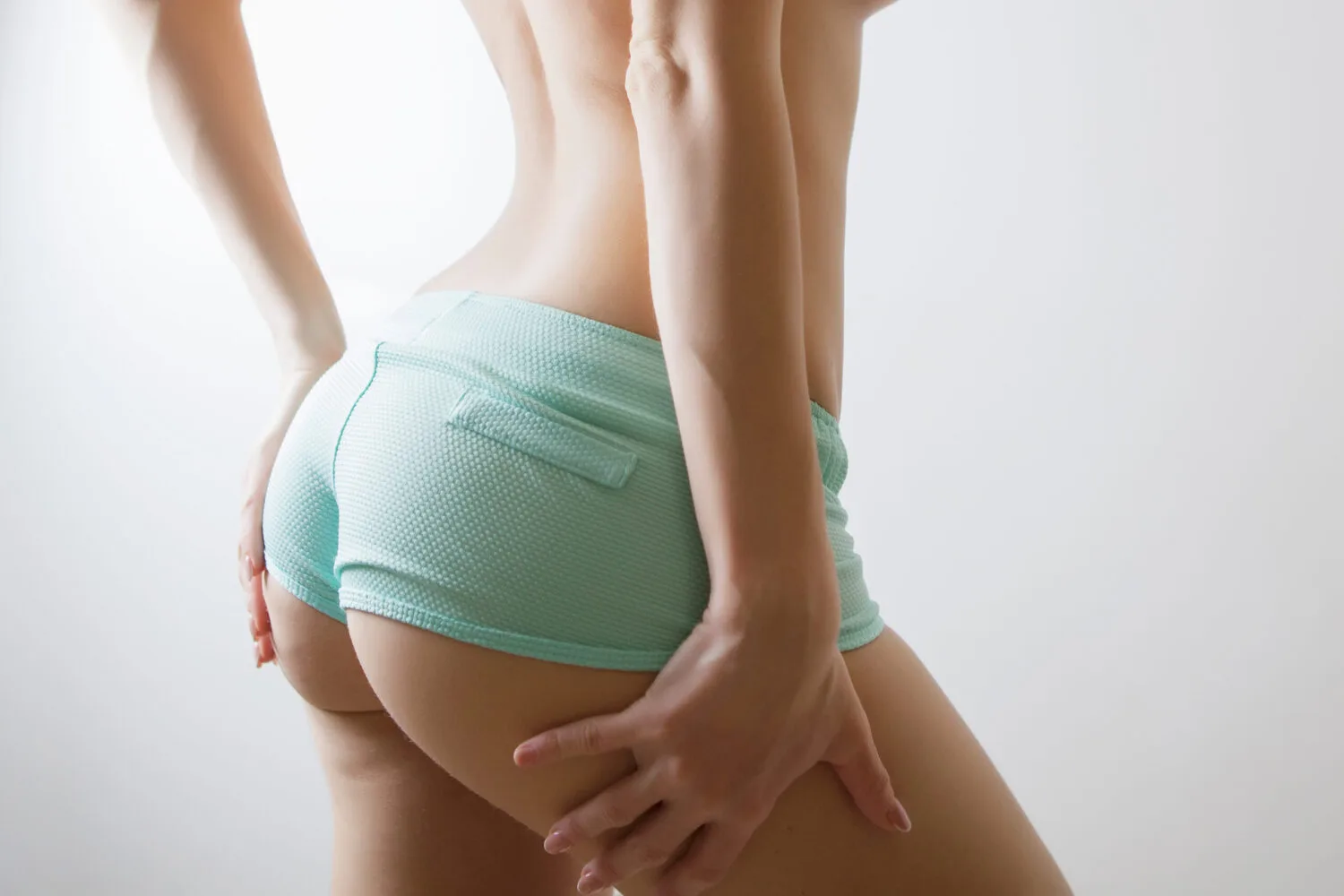Gynecomastia is often confused with the presence of excess chest fat in the area since both issues contribute to the same cosmetic concern of having an undefined chest and contributing to the appearance of ‘man boobs’. While they may appear the same, the cosmetic solution they require is different.
In this article, we’ll explain the differences between gynecomastia and chest fat and the treatment options for each.
Do I Have Gynecomastia or Just Fat? Evaluating Symptoms
During a consultation, your plastic surgeon will examine your chest to confirm the cause of your overdeveloped chest. However, evaluating the following symptoms can indicate the issue:
Pain And Tenderness In The Chest Region
Hormonal imbalances in men can make the breast tissue swell, which in turn can lead to some pain and tenderness in the area. However, breast pain in men can also be due to a variety of other reasons such as cysts and muscle strain. In contrast, having excess fat in your chest won’t cause such symptoms as it is no different to carrying fat in other areas of your body.
What Do Your Breasts Feel Like?
You may be able to differentiate gynecomastia vs fat by examining the texture of your chest. Chest fat feels soft, as it’s no different than body fat in your arms, abdomen, or elsewhere in your body. Whereas gynecomastia may feel firmer to the touch, and in some cases, you may feel a hard lump beneath your skin.
How Does Your Chest Look?
If your chest swells due to excess fat, you will likely have saggy skin and lack definition in the area. In contrast, as the swelling from gynecomastia is due to firmer breast tissue, the chest will appear rounder and more defined, similar to female breasts. Additionally, men with gynecomastia may also have more erect nipples due to the excess oestrogen.
Nipple Discharge
Fluid discharge from one or both of your nipples may indicate that you have gynecomastia rather than excess fat. However, apart from gynecomastia, there are many other reasons why nipple discharge may occur in men, including testosterone deficiency, pituitary tumour, and breast cancer.
How Your Body Reacts To Diet And Exercise
If you make an active effort to lose weight with diet and exercise, you will likely see some reduction in your chest over time if the volume in this area is due to fat. Although some people have stubborn pockets of fat that don’t respond to diet and exercise, most people will see at least some reduction in their pectoral region with consistent efforts. In contrast, gynecomastia does not respond to diet and exercise, which means the mass in your chest will remain the same despite your efforts.
Gynecomastia Before and Afters
What is Gynecomastia?
Gynecomastia, commonly called ‘man boobs,’ is a condition in which male breast tissue overdevelops. It is a common condition that presents differently, with some people developing a small mass of tissue around the nipples while others develop larger breasts similar to women.
How Does Gynecomastia Develop?
Both men and women have breast tissue. However, due to the differences in hormone levels between the two sexes, male breast tissue does not grow during puberty as it does in women unless there is a hormonal imbalance.
Hormonal Imbalance
Testosterone is the dominant hormone in men, while oestrogen is the dominant female hormone. Men produce low levels of oestrogen as testosterone suppresses this hormone. Thus, gynecomastia can develop if men produce too little testosterone or too much oestrogen. Such hormonal imbalances can occur for many reasons:
Obesity
Not only does obesity cause chest fat, but it can also cause gynecomastia. Fat cells produce oestrogen, which means the more body fat you have, the higher your oestrogen levels are. As a result, oestrogen causes the breast tissue to develop.
Puberty
Hormone levels are known to fluctuate as we reach puberty. As a result, it’s common for teenage boys to develop gynecomastia as their bodies change. In this case, the gynecomastia will likely resolve itself once you reach your 20s and hormone levels stabilise.
Old Age
Gynecomastia is more prevalent in older men due to the hormonal imbalances accompanying the natural ageing process. As men reach their 50s and 60s, their bodies begin to produce less testosterone. Additionally, men typically accumulate more body fat with age, resulting in more oestrogen.
What is Chest Fat?
Chest fat, also known as pseudo-gynecomastia, is the pockets of fat that accumulate in the chest, often giving men the appearance of ‘man boobs’. We all carry fat in different parts of our body, with many men accumulating fat in their chest and upper body. It can result in a distorted body shape, with the upper body being heavier than the lower body. Therefore, most men are uncomfortable with the appearance of chest fat and wish to get rid of it.
What Causes Chest Fat?
Chest fat usually results from having too much body fat. Our genetics influences the amount and distribution of body fat. However, a sedentary lifestyle with an unhealthy diet and infrequent exercise will contribute to expanding the fat cells in the area, thus making the chest fat appear more prominent.
Does (Chest Fat) Pseudogynecomastia Go Away?
It is possible to get rid of pseudogynecomastia with a lifestyle change, although the results will vary from person to person. Our dieticians can help you reach your weight goals by creating a personalised diet plan based on your blood work, DNA, and other unique needs.
An exercise regimen that incorporates cardiovascular exercise can help you burn off body fat. Additionally, workouts that specifically target your chest, such as bench presses, will build muscle in this area to add more definition. Alongside your workout regimen, you should also eat a high protein and low carb diet to reduce weight and strengthen your muscles.
Most men will see some reduction in their chest fat with consistent effort. However, chest fat can be stubborn and hard to get rid of completely. Furthermore, if you revert to a more sedentary lifestyle, your chest fat will likely return. Therefore, many men consider a surgical solution that is more permanent and definitive.
Treatment For Gynecomastia Vs Fat
Surgeons treat gynecomastia with gynecomastia surgery, also known as male breast reduction. Whereas they remove chest fat using liposuction. However, it’s common for men to have both gynecomastia and excess fat tissue, in which case surgeons will combine both procedures to resolve both issues.
Gynecomastia Surgery
Gynecomastia surgery usually takes 1-3 hours to perform, and you will be under sedation or general anaesthesia. The exact treatment plan, including the placement of incisions, varies for each patient. Typically, the surgeon creates an incision around the nipples to extract the excess breast tissue, after which they will suture the incisions.
Liposuction
Liposuction surgery on the chest usually takes 1 hour under sedation or general anaesthesia. To perform the procedure, the surgeon makes small incisions in the chest through which they insert a suction cannula to extract the excess fat cells. Afterwards, they close the incisions with sutures.
Schedule An Evaluation For Gynecomastia At Creo Clinic
Dr Omar Tillo is a double-board certified surgeon specialising in male body contouring procedures, including gynecomastia. In addition to his extensive experience performing gynecomastia surgery, he has comprehensive training in using a range of liposuction technologies.
If you suffer from gynecomastia or excess fat in the chest and want a more sculpted appearance, book a consultation with Dr Omar Tillo to discuss a bespoke surgical solution.
